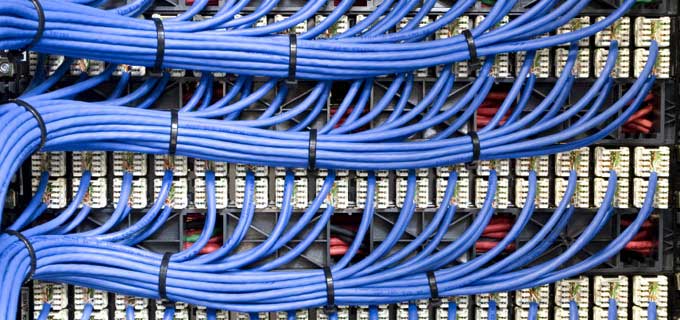
At this time of year a lot of you are adding new devices to your home ecosystem and undoubtedly a lot of them are equipped with Wi-Fi connectivity. Today we’ll take a look at getting everything set up and connected to your home network so you can take full advantage of what they have to offer.

WPS
Most modern devices are able to take advantage of a technology called WPS. That stands for W-iFi Protected Setup and it should be your first course of action when setting up your gear.
If your wireless router has WPS support (as most modern routers do) then it can be as simple as pressing the dedicated WPS button on your router then doing the same thing on your device. After a couple of seconds everything should be connected and set up automatically. Some devices with WPS support don’t have dedicated buttons or may be hard to access, in which case you may find a software button. Even with your router you may be able to initiate WPS via the router’s software. Check your device’s Wi-Fi settings menu for a WPS setup option and it will save you having to fumble around with passwords or anything technical for manual connection. Once you activate WPS on your router you’ll have a few seconds to activate WPS on whichever device you’re looking to connect. As soon as the router with WPS active detects a device with WPS active they’ll do the rest of the work to get everything paired without further interference from you, and with any luck you’ll find yourself connected in no time.
Your Windows 10 devices ought to be able to handle this with little fuss but OS X users may find it a challenge and will want to connect manually by selecting the Wi-Fi network and typing in the password when prompted. Windows 10 users can simply tap “Connect,” select the network you want to connect to, then activate WPS on your router. Windows 10 will do the rest for you.
Wired
Using a wired connection is still an option for some and can be as simple as plugging in a cable; however, fewer and fewer devices are natively supporting wired connections with Wi-Fi simply being more convenient. With the newer networking standards you shouldn’t notice any real decrease in performance or reliability when using Wi-Fi versus a wired connection anyhow, and when in doubt you could always get a Wi-Fi extender to help give wired-only devices access to your Wi-Fi network. I know there are a number of printers and NAS devices (for example) which don’t feature Wi-Fi connectivity but will work fine when plugged in to the wired network ports on a Wi-Fi extender or wireless access point. If you insist on a wired connection, then consider picking up colour coded cables to help you keep all those wires organized.
Of course it doesn’t end there. You may want to do more fiddling around with your settings to improve the situation. If you’re running many devices in your home then you may want to consider upgrading your router to one which can handle your growing arsenal of gadgets. A better router means your network will be able to provide better support to run a large number of devices at once, from PCs, to printers, to tablets and phones. If you’re noticing that your network is slowing down with so many devices than a newer, more powerful 802.11ac router is strongly recommended. If you want to dig in to the technical nitty gritty you can take things even further by fiddling with the QoS settings. A lot of newer routers automate this to some extent, letting you easily prioritize certain devices or services above others but that may not be enough for you. Load up your router’s backend software and take a look. If you’re like me you may want to give your online gaming priority so you never have to worry about lag, or prioritize media streaming.
Ports
As far as gaming goes, there is more you can do to improve the experience on your gaming console.
Opening up ports will help you improve your gaming experience by changing your NAT type to open. NAT stands for Network Address Translation. You don’t need to worry too much about the technical nitty gritty about it; suffice it to say that with an open NAT you’ll have much more fun online than with a closed or moderate NAT. It will cut down on disconnections, improve communications, and generally smooth things out. The culprit for a strict or moderate NAT is generally ports being blocked by your router. With gaming consoles, this is usually something you can solve once with a few tweaks, where PC gamers may have to make a settings adjustment for every new game they want to play, depending on the game’s developers. Regardless of which particular console you have, be sure to check out which ports to open up and make sure you’ve done so in your router’s settings. This is fairly easy to do these days and once its set up you can forget it. While you’re digging in your router’s settings, be sure to also make sure that universal plug and play (UPnP) is enabled too, which will certainly help with device communication.
QoS
The method for forwarding ports, setting up QoS, and UPnP varies by router and isn’t technically a necessity for connectivity but if you’re serious about performance once you’re connected, it is definitely something worth looking in to. You’ll want to consult your router’s documentation for the specific procedure in this case, and you’ll find listings for which ports to forward at websites like portforward.com.
Whenever I get a new device the first thing I usually do once powering it up is to connect it to my network. Doing so helps you unlock the full potential of your new gear, download updates, and make it part of your home tech ecosystem. I’m also a fan of manually setting device prioritization. While automatic solutions do a decent job for most people, I like the peace of mind of knowing that my online gaming and movie streaming will get the maximum bandwidth my network will allow without compromise.




Boy if I won this I would get a cell phone and enter the informaation age at 68! TY for the opportunity.
Comments are closed.